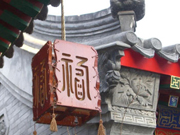Traditional courtyards encouraged for tourism

 0 Comment(s)
0 Comment(s) Print
Print E-mail CNTV, June 5, 2016
E-mail CNTV, June 5, 2016
New draft guidelines have been rolled out governing tourism in China's capital with one entry stating that residents can utilize their own Siheyuan, or courtyard, to run tourism businesses. It's called "Beijing Homes", and offers tourists a down to earth view of old Beijing with traditional residences turned into restaurants, hotels, or simply as sightseeing destinations.
For some tourists to Beijing, just seeing the city's history isn't enough - they want to live it too. And city authorities want more officially-credited "Beijing Homes" like this one.
"We identified people coming from abroad...." said Gavin Rimmer, general manager of Red Wall Garden Hotel.
It's inside a living, breathing Hutong not everything here is Eastern as renovations are made to the original courtyard.
Siheyuan were the capital's predominant dwellings before the modern era. Cultural relic expert Deng Wei calls Siheyuan a living fossil of the ancient city. He says people carry a shared responsibility in protecting them.
"Beijing's Hutong tourism has reached a good level of development, which is highly regarded by both Chinese and foreign visitors. But the management needs to be enhanced. The renovation of nearby environments, the enhancement of hardware and software big and small issues still exist," Deng said.
This is Beijing's first Hutong Museum. It used to be the home of the author, Lin Shuhua, and is now supported by the Prince's Trust, a charity run by Prince Charles.
65-year-old Liu Pingtai styles himself as the museuem's guardian.
"They are down to earth, human, and the relationship between neighbors is harmonious. When one family has issues, all families help out as if we are one family. They are different from apartments. Apartments are independent to each other. There's little contact between people," he said.
Eighty percent of Siheyuan are gone as Beijing has undergone massive modernization in the past century. But protection of these traditional courtyards evokes some of the deepest emotions from Beijingers' collective memory.





